The first 90 days in a new job are the most crucial period for new hires. It’s a critical phase for learning, acclimation, and establishing oneself in a new role. Unfortunately, 44% of employees say they’ve had regrets or second thoughts about accepting their job offer within the first week. This highlights the importance of a comprehensive and supportive onboarding process.
To help reduce employee turnover and set teams up for success, let’s dive into how a new employee onboarding checklist can help new hires feel welcomed, informed, and prepared for their new roles.
Why is onboarding so important to new employees?
Starting a new job can be overwhelming. Onboarding helps ease this transition by providing clear guidance, necessary tools, resources, and knowledge, which makes the new environment less intimidating.
New joiners are expected to absorb a lot of information about their new company, including the company culture, processes, and expectations. This onboarding period, especially the initial 90 days, is vital for understanding the job responsibilities and how they fit into the larger organization. When new employees understand their role and how it contributes to the organization, their job satisfaction and commitment to the company increase.
During onboarding, managers often set short-term goals so that new staff can start demonstrating their value to the organization. It’s time for new joiners to show skills, adaptability, and potential. This onboarding period allows both the new hire and the employer to assess fit, give, receive, and act on feedback, as well as make necessary adjustments to work style and habits.
Most importantly, this is a new employee’s opportunity to establish good working relationships with colleagues, managers, and other stakeholders, which helps them integrate into the team and understand the dynamics of the workplace. This way, they establish their credibility and prove themselves as a valuable addition to the team.
After all, onboarding is not just a formality but a critical component of employee success and retention. It is an investment in the workforce that pays off in terms of higher productivity, better team dynamics, and lower turnover rates.
What should be included on your employee onboarding checklist?
It’s a challenging and sometimes disheartening reality in the workplace that even after rigorous interview processes and thorough assessments, a new employee may decide to resign after just one day or, in some cases, might not even complete their first shift. (A quick Google search confirmed this.) This situation can be difficult for both the employer and the team, as it often leaves a gap that needs to be quickly filled, and can impact the morale of existing employees.
What HR, manager, or employer can do here is to have a supportive onboarding process that helps new employees integrate smoothly into the company culture. This onboarding checklist, divided into weekly segments, ensures a smooth transition, covering all necessary aspects from initial orientation to long-term integration and skill development.
New Hire Onboarding Checklist Week 1: Introduction and Orientation
The first week of onboarding for new employees is a critical period aimed at ensuring a smooth transition into the organization. It should be dedicated to providing a thorough introduction to the company, its culture, and the employee’s role within it. The key focus is to make new hires feel welcomed, well-informed, and adequately prepared to start their roles effectively.
During this initial week, it’s important to avoid assigning new employees to client-facing or critical tasks. This approach allows them to acclimatize to the new environment without the pressure of immediate high-stakes responsibilities. Instead, the focus is on orientation and familiarisation with various aspects of the organization.
Pre-Arrival Preparations
- Send a welcome email or packet with company information
- Prepare their workstation and necessary equipment
- Set up email and other essential accounts
- Schedule first-day activities and meetings
First Day Basics
- Provide a warm welcome and introduction to the team and other employees
- Give a tour of the office and facilities
- Review company policies and procedures
- Provide an employee handbook
- Complete necessary paperwork (e.g., tax forms, employee agreements)
Health and Safety
- Educate on health and safety protocols
- Provide information on emergency procedures and contacts
- Review workplace ergonomics and well-being resources
Administrative Details
- Explain payroll procedures and benefits
- Review working hours, breaks, and leave policies
- Provide information on parking, commuting options, and office access
New Hire Onboarding Checklist Week 2-4: Initial Training and Integration
This phase builds upon the foundational understanding established in the first week. Here, new employees start to delve deeper into more specific aspects of their roles and responsibilities within the organization. It’s a period of growth, learning, and becoming an integral part of the team.
What’s most important during these weeks is the psychological transition from feeling new to feeling part of the team. It takes efforts to integrate new hires not just into the workflow, but also into the social and cultural fabric of the team and organization. Activities like collaborative projects, informal meetings, and team lunches play a key role in this. Such interactions help establish relationships and understanding of the informal dynamics and ethos of the team, which are often as crucial as formal roles and responsibilities.
Training and Development
- Outline job responsibilities and expectations
- Provide training on company systems and software
- Assign a mentor or onboarding buddy for initial guidance
- Discuss short-term or 90-day goals
- Introduce new team members to the company’s values and mission
- Encourage participation in company events and social activities
- Schedule meetings with key team members and departments
- Provide in-depth training in specific job-related skills
- Encourage participation in departmental meetings and projects
- Conduct initial performance feedback session
- Encourage engagement in team-building activities
- Introduce new employees to company history and success stories
- Provide a bigger picture of cross-departmental functions and roles
- Review initial performance and set future, long-term goals
- Discuss career development paths and opportunities
- Provide detailed information on performance review processes
- Personal information not related to the job: Asking for details like marital status, religious beliefs, or other personal information not relevant to the job can be invasive and inappropriate.
- Mandatory social media connections: Requiring employees to connect with the company or colleagues on personal social media accounts can infringe on their privacy.
- Compulsory participation in non-work activities: While team-building activities can be beneficial, making them mandatory, especially if they are outside of work hours, can be problematic.
- Sensitive or confidential company information: Sharing too much information too soon, especially if it’s sensitive or confidential, can be risky.
- Irrelevant training modules: Overloading new hires with training that is not directly relevant to their role can be overwhelming and inefficient.
- Negative comments about past employees or competitors: Discussing past employees or competitors in a negative light can create a toxic work environment.
- Schedule regular check-ins and feedback sessions
- Provide resources for further learning and development
- Offer opportunities for questions and clarifications
- Encourage open communication and feedback
- a poll to gauge how employees will react to a new HR policy change,
- a poll to get everyone’s opinion on the new paint scheme for the office,
- a poll to understand what has been the most effective selling strategy, or
- absolutely anything else.
Integration into Company Culture
New Hire Onboarding Checklist Week 5-8 (Month 2): Deepening Understanding and Skills Development
At this stage, new hires start to transition from being learners and observers to becoming active contributors. They reinforce and expand upon the initial training and integration that they experienced in their first month. This period also involves advanced training in job-specific areas, greater involvement in departmental functions, and an initial performance review.
The role of a mentor or onboarding buddy often evolves during this phase. Instead of just guiding the new hire, mentors can now start challenging them with more complex tasks and encouraging them to take on small but significant responsibilities. This helps in building the new employee’s decision-making skills and confidence in their role.
Advanced Training
Cultural and Team Integration
New Hire Onboarding Checklist 9-12 (Month 3): Performance Evaluation and Future Planning
This stage goes beyond just reviewing initial performance and setting goals; it’s about integrating the new employee into the long-term vision of the organization and aligning their personal career aspirations with the company’s objectives.
Here, managers should start gradually increasing the employees’ autonomy in their roles. As their understanding of the job deepens and their skills develop, they are encouraged to take on more independent tasks and make decisions with less supervision. This shift is crucial for fostering a sense of ownership and responsibility, key drivers of job satisfaction and engagement.
What should not be included on your employee onboarding checklist?
There are certain items that should not be included on an employee onboarding checklist, as they can be inappropriate, irrelevant, or counterproductive to a new hire’s integration into the company. It’s important to tailor the onboarding process to be welcoming, relevant, and respectful of the new employee’s role, boundaries, and individuality.
Here’s a list of things that generally should not be on an employee onboarding checklist:
What’s next after successful onboarding?
The end of the formal onboarding process marks the beginning of an ongoing developmental journey. As employees grow and their roles evolve, the type of support and resources they need will also change.
Consider adaptive learning opportunities like advanced training programs, cross-departmental learning, or opportunities to engage in new projects outside their usual scope. This way, you ensure employees not only remain competent in their current roles but are also prepared for future challenges and opportunities within the organization.
How can organizations leverage intranet for the onboarding process?
From dealing with paperwork and introducing new hires to scheduling onboarding activities and providing training, that’s A LOT of boxes to tick off.
When it comes to the nitty-gritty of it, HRs might have to spend hours, if not days, using different tools to set up the process and repeat it all over again for every new person hired. Think Google Calendar for scheduling one-on-ones, an LMS for training modules, or DocuSign for forms, just to name a few. This is just a disaster waiting to happen.
But what if we tell you that you can set up and centralize the onboarding process within your company intranet? Here are a few use cases.
Create employee profiles and promote employee networking
Whenever you join a new group or environment, one of the very first things you do is to make yourself known. In this context, employee profiles outline who a person is and showcase what their role is in an organization. Employee profiles are particularly crucial for visualizing team structures, especially for both new and remote employees.
Think about when you were a newbie yourself. You got introduced to a large number of people in a short time, and it was challenging to remember all the names and faces. Employee profiles help put a face to the name, and vice versa.
Axero’s Employee Directory brings all of your people together in one place, where you can search your company directory and find the people you need. Our rich employee profiles contain personal information, work experience, skills, contact information, and more. Thanks to our interactive organizational chart (that builds itself and syncs automatically), it’s only a click away to connect with colleagues, see who reports to whom, and find anyone in your company. Book a demo and see it for yourself.
This approach not only creates a more personal and collaborative work environment but is also essential for network building and identifying internal talent. The visual representation of team structure in these profiles can rapidly enhance organizational understanding, which is crucial in diverse or multinational teams.
Streamline and facilitate training sessions
There are many ways to train new employees. It can be internal or outsourced. It can be held in a classroom, a workshop, or a seminar. It can also target individuals for specialized knowledge or groups for overall management skills. Each training method has its own advantages and can be selected based on the specific needs of the new employees and the strategic goals of the organization.
Employers often turn to online learning platforms like LinkedIn Learning, Skillshare, or Coursera. These platforms offer a wide range of topics but may lack depth in content specific to an organization’s unique needs, as they’re designed for a general audience. On the other hand, Learning Management Software (LMS) can offer a more customized training experience. Still, the costs and resources required for setting up and maintaining it can be substantial, particularly for smaller organizations or those with limited budgets.
This is where modern intranet, like Axero, enters. A knowledge management software solution within Axero intranet can facilitate a blend of custom and broad-based training approaches, offering a more balanced solution in terms of cost, customization, and content relevance. You can upload employee training manuals, videos, and onboarding materials in a dedicated area where everyone knows to go.
Provide access to essential documents
The first day and initial weeks at a new job can be overwhelming for new hires, and the last thing you want to do is bombard them with multiple emails for every document shared, especially when these emails often get buried under other communications.
Organizations can centralize essential documents on their intranet, and new employees can access everything they need in one place at their own pace. This approach not only reduces email clutter but also empowers new hires to manage their onboarding process more independently and efficiently, making the experience less daunting and more streamlined.
And yes, you guessed it right, your internal knowledge base within Axero intranet becomes the go-to place where employees find the information they need to thrive. Type a keyword or search based on author. When information is in one centralized, searchable hub, your company becomes more efficient. So long are the days of buried and mismanaged files!
Launch surveys and gather feedback
When the formal onboarding process comes to an end, whether that’s three months in or after the probation, it’s only logical to get some feedback from the employees who underwent the process themselves. Their input is crucial for proactive adjustments in onboarding strategies.
You can utilize polls and surveys within your company intranet to gauge what worked, what didn’t, and what can be improved during the onboarding process. What’s more is that you can create organization-wide surveys and gather opinions on just about any decision needed to be made. They can be as simple as:
Empowering your employees to have a voice in your company boosts morale and helps you develop a stronger company culture.
The bottom line.
Again, there’s a lot that goes into a successful onboarding process. Different organizations have their unique needs, and there’s no right or wrong in how you choose to deploy your own onboarding process.
Intranet is not just a tool for information dissemination; it’s a platform that nurtures a welcoming and supportive environment. It aligns with the modern workforce’s expectations of digital proficiency and interactive learning, making it an indispensable asset in any organization’s onboarding strategy.
When companies embrace intranet for onboarding, they are not only ensuring a smoother induction for new employees but are also laying the foundation for a more connected, informed, and engaged workforce.
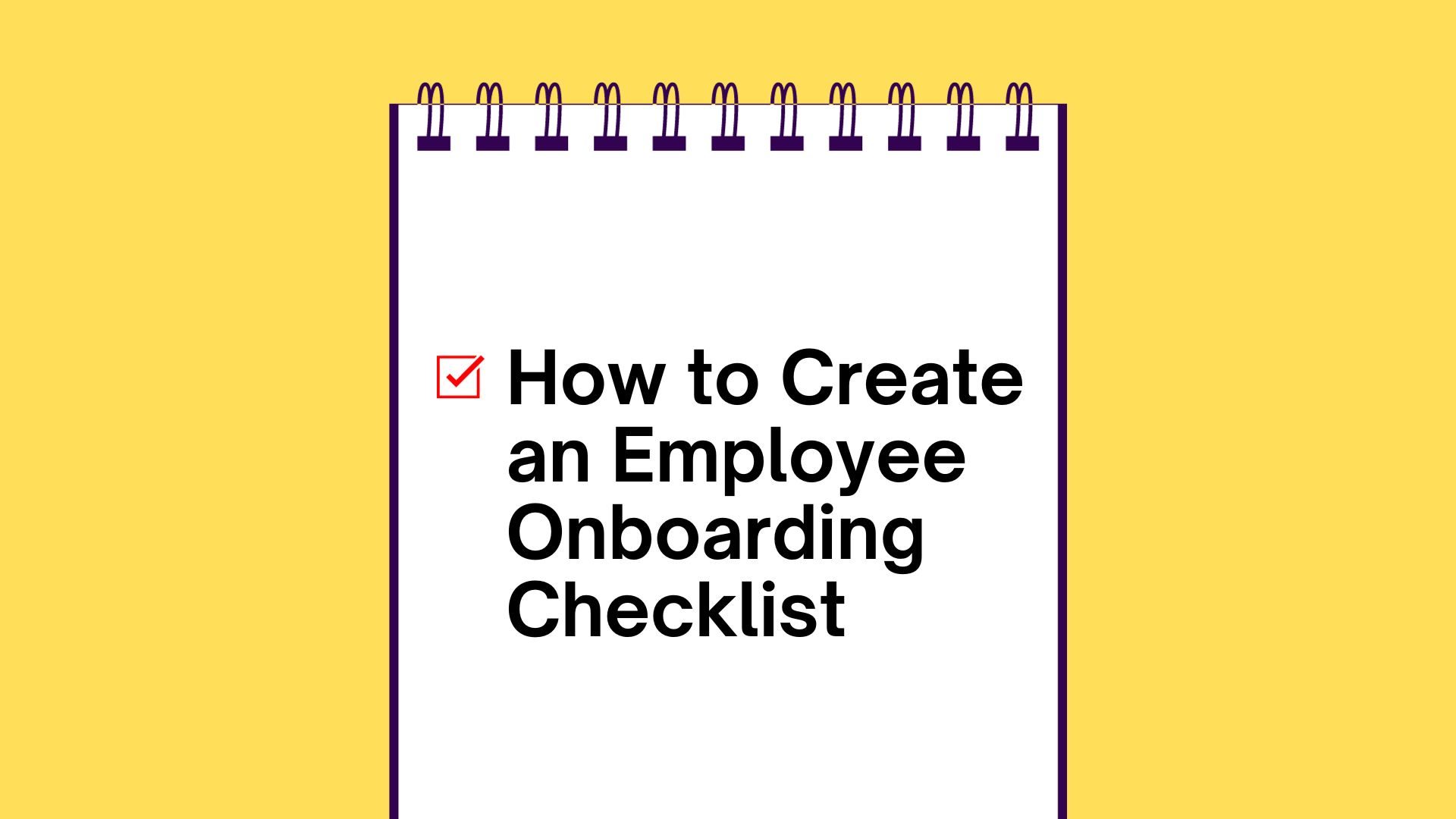




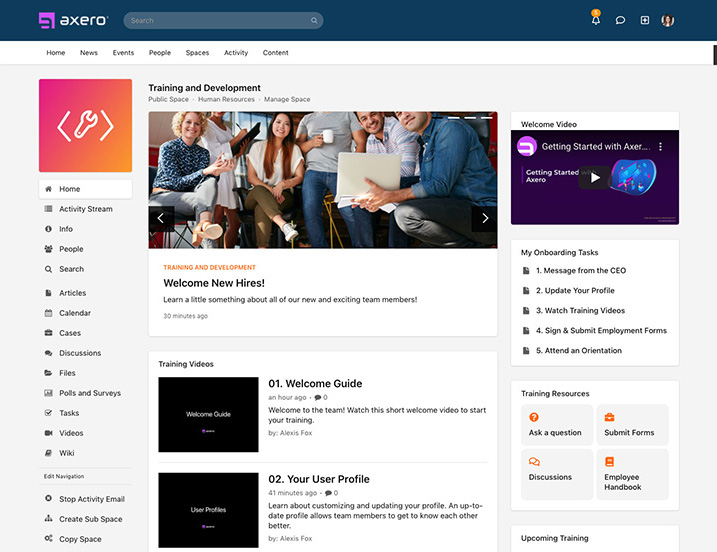
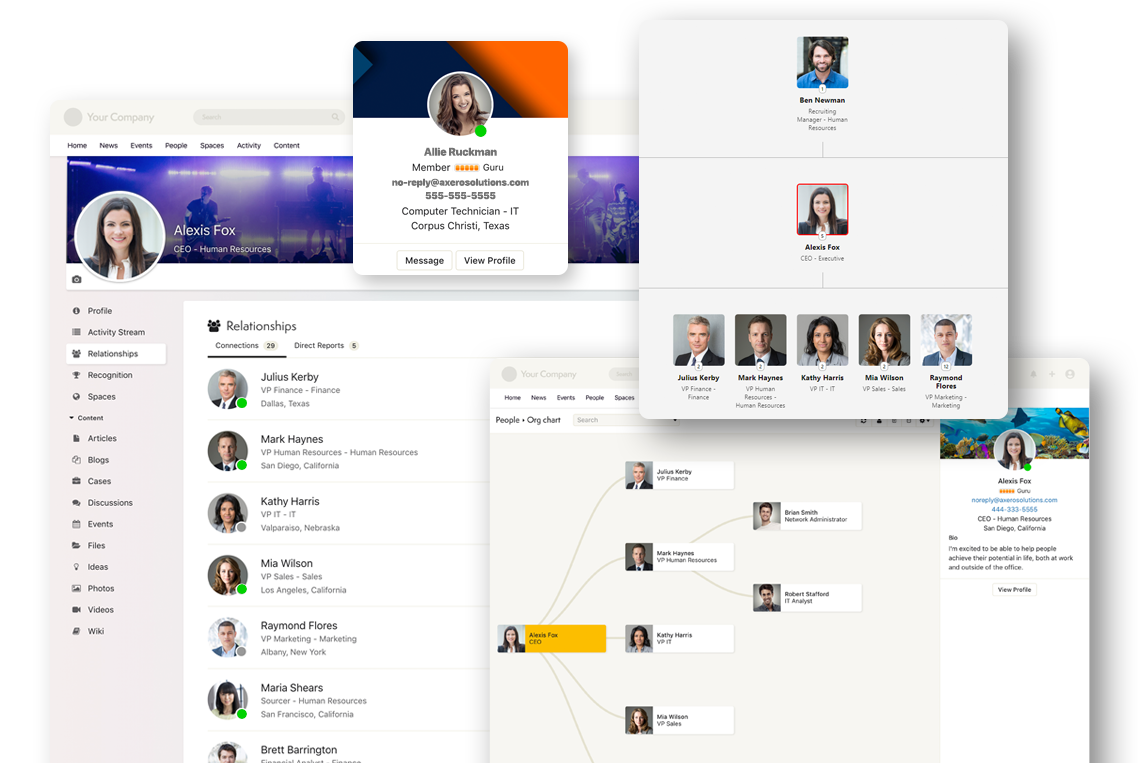
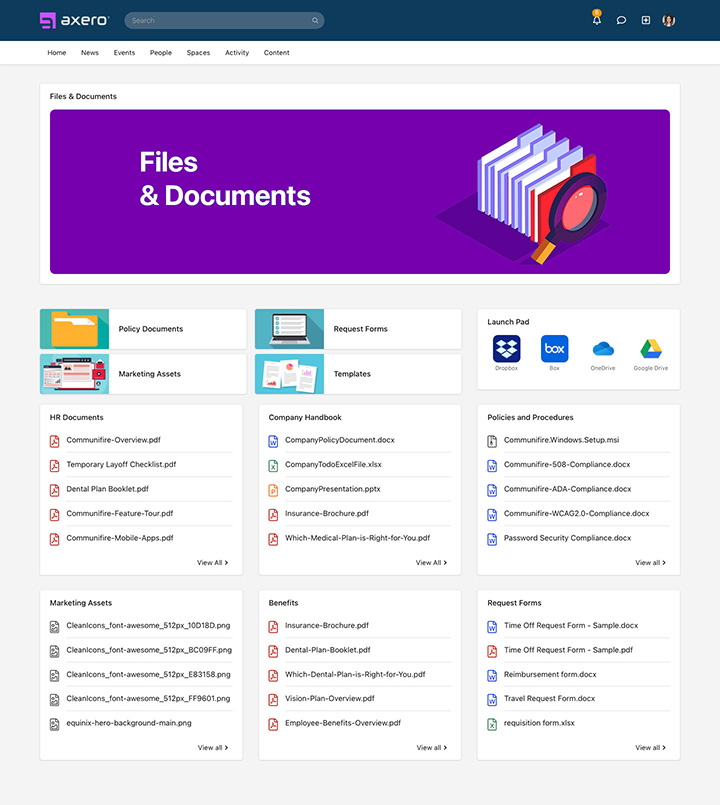
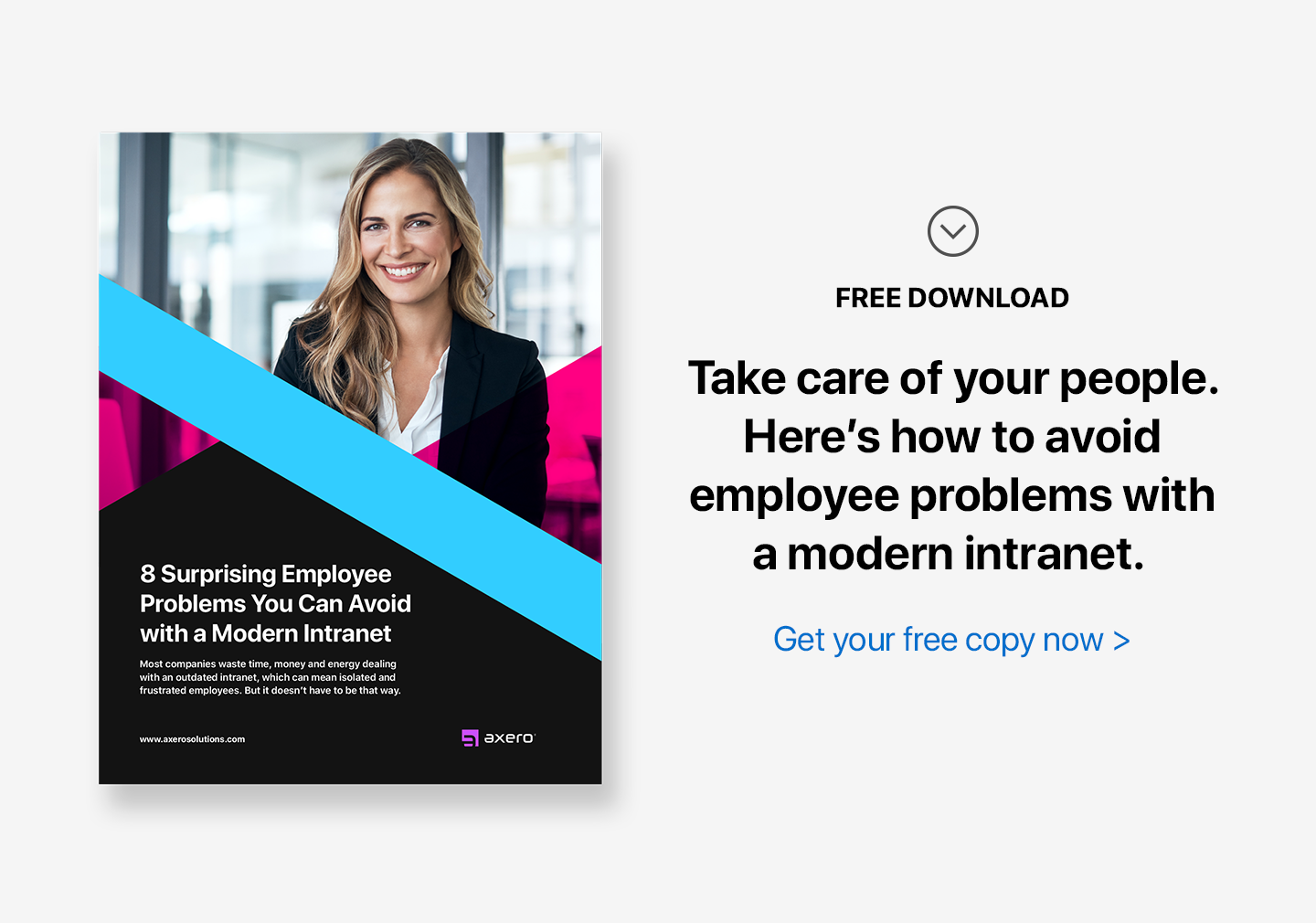
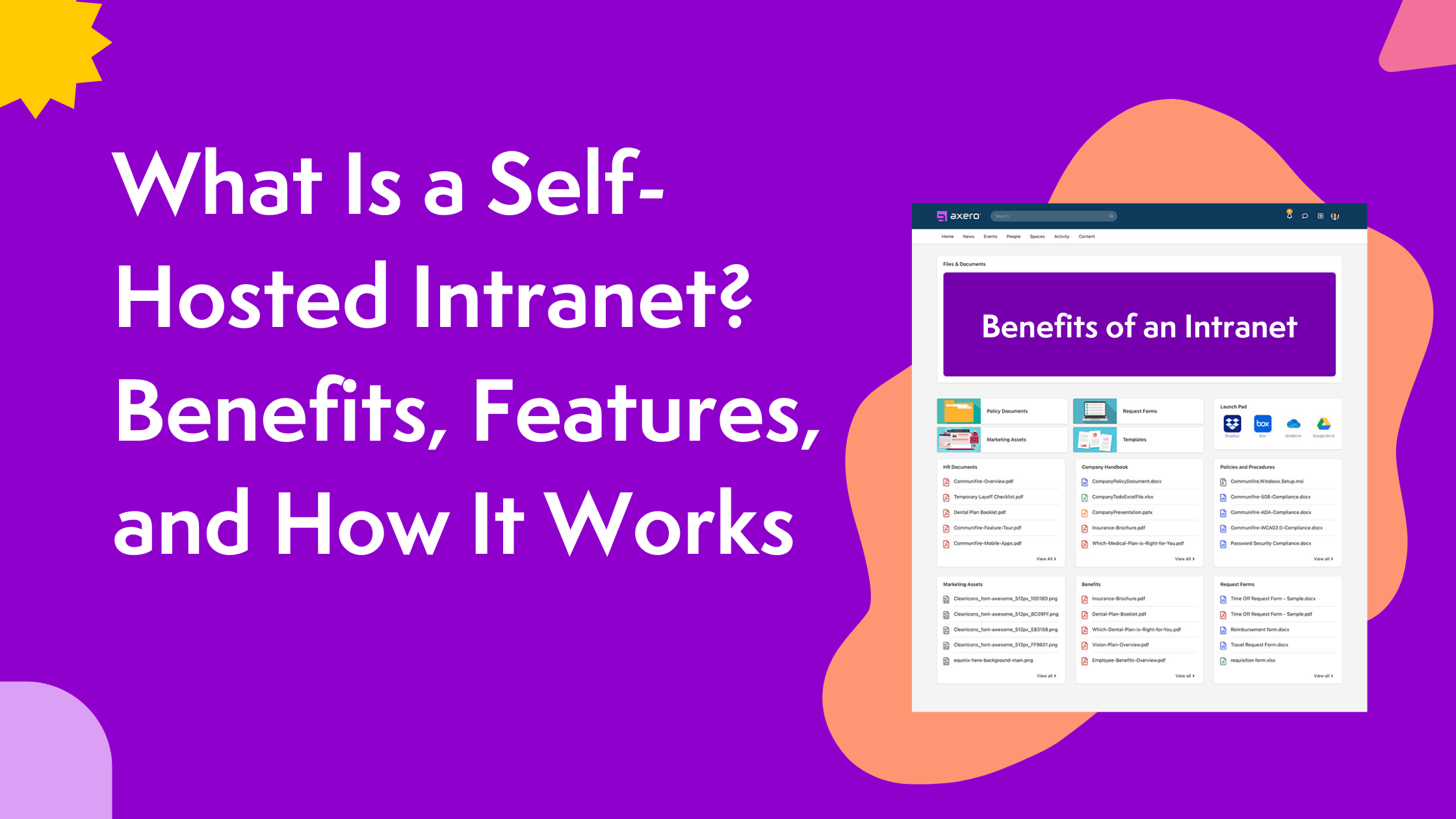
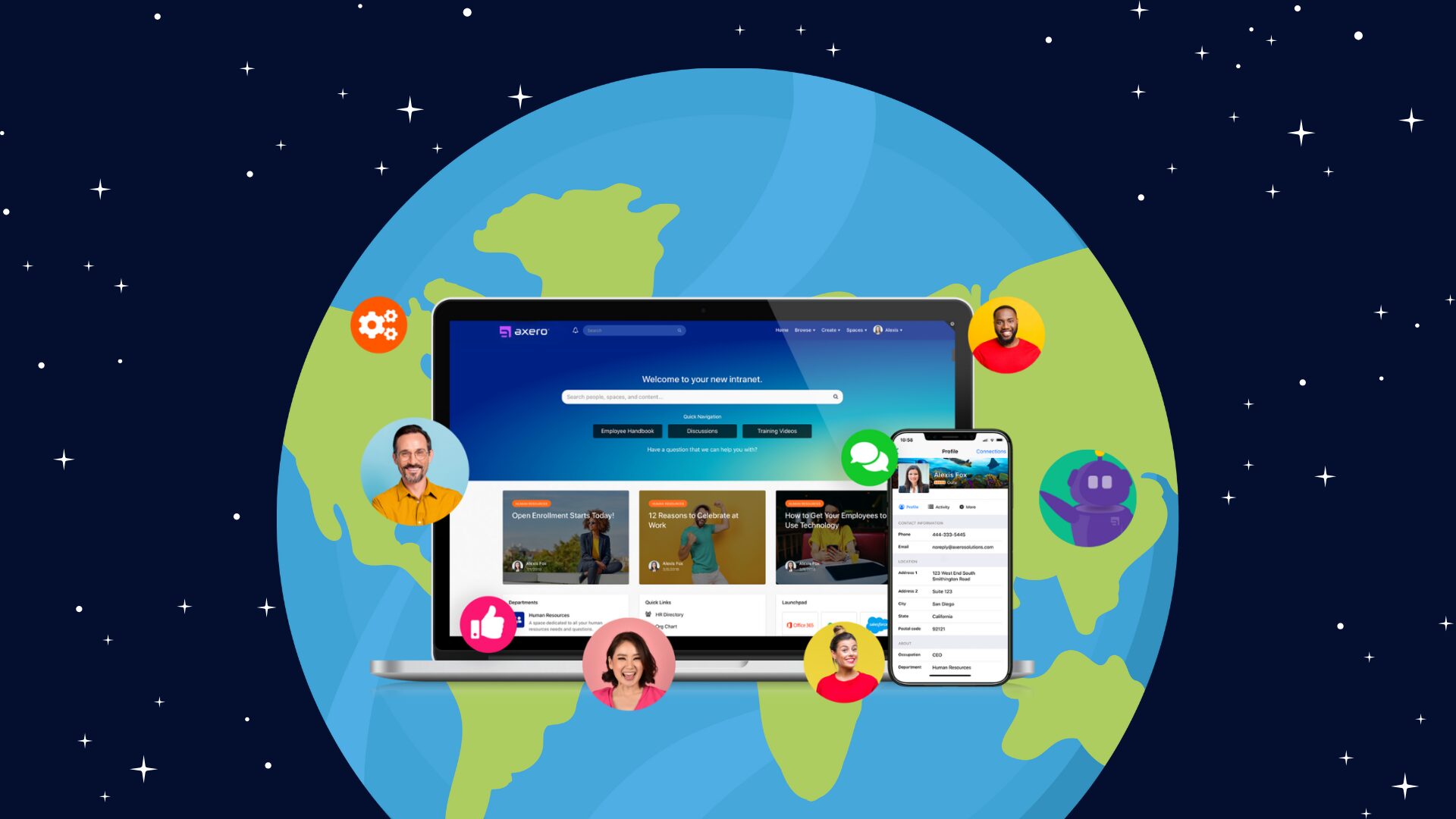
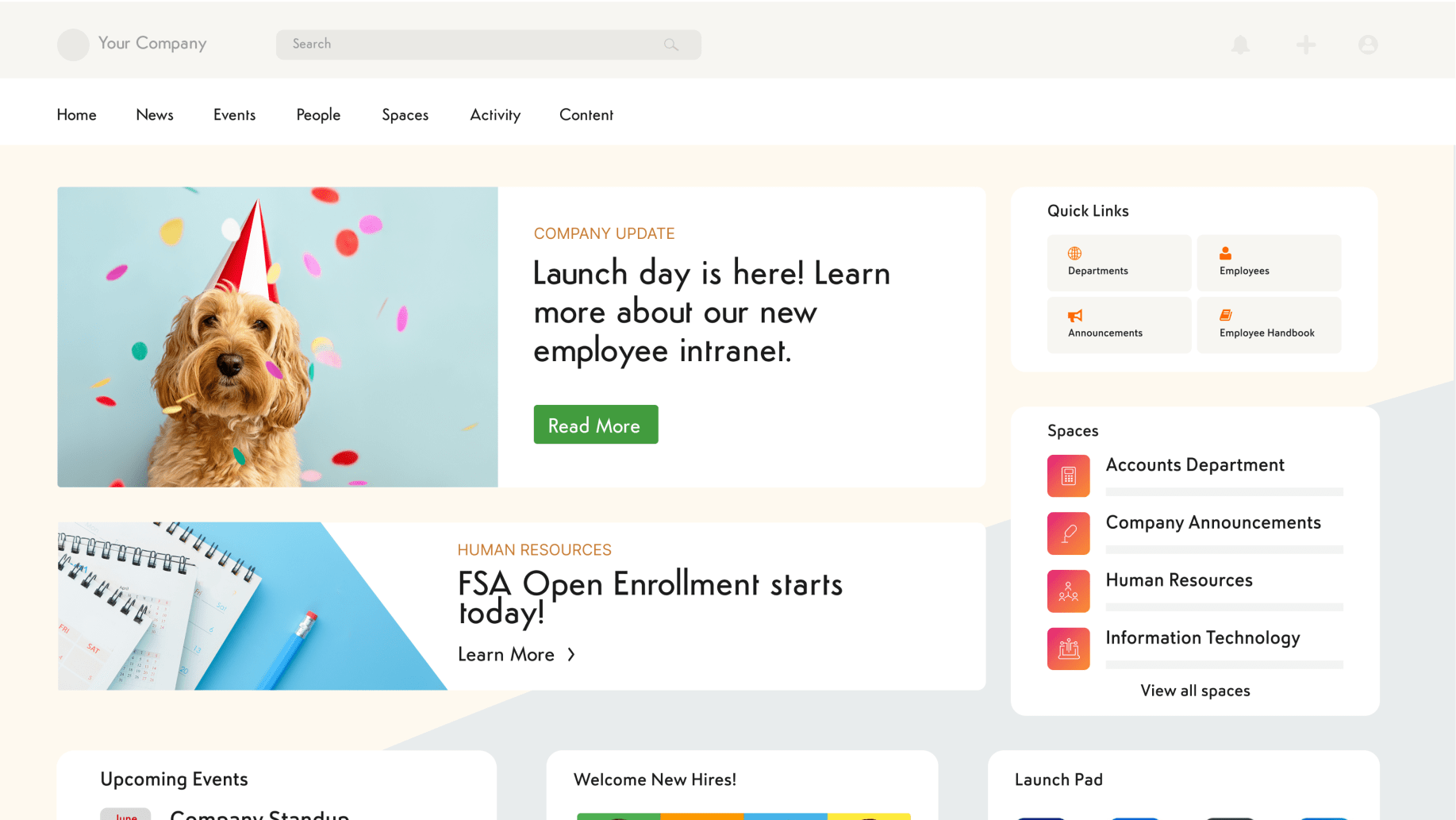







 info@axerosolutions.com
info@axerosolutions.com 1-855-AXERO-55
1-855-AXERO-55


